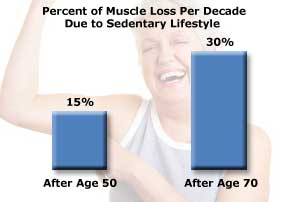
Get the most from your workouts by knowing how to gauge your exercise intensity.By Mayo Clinic Staff
When you exercise, are you working hard or hardly working? Exercising at the correct intensity can help you get the most out of your physical activity — making sure you’re not pushing too hard or too little. Here’s a look at what exercise intensity means, and how to maximize your workout.
Choosing your exercise intensity
How hard should you be exercising? The Department of Health and Human Services recommends these exercise guidelines for most healthy adults:
- Aerobic activity. Get at least 150 minutes a week of moderate aerobic activity — such as brisk walking, swimming or mowing the lawn — or 75 minutes a week of vigorous aerobic activity — such as running or aerobic dancing. You can also do a combination of moderate and vigorous activity. It’s best to do this over the course of a week.
- Strength training. Strength train at least twice a week. Consider free weights, weight machines or activities that use your own body weight — such as rock climbing or heavy gardening. The amount of time for each session is up to you.
Your exercise intensity must generally be at a moderate or vigorous level for maximum benefit. For weight loss, the more intense or longer your activity, the more calories you burn.
Balance is still important. Overdoing it can increase your risk of soreness, injury and burnout. Start at a light intensity if you’re new to exercising. Gradually build up to a moderate or vigorous intensity.
Consider your reasons for exercising. Do you want to improve your fitness, lose weight, train for a competition or do a combination of these? Your answer will help determine the appropriate level of exercise intensity.
Be realistic and don’t push yourself too hard, too fast. Fitness is a lifetime commitment, not a sprint to a finish line. Talk to your doctor if you have any medical conditions or you’re not sure what your exercise intensity should be.
Understanding exercise intensity
When you’re doing aerobic activity, such as walking or biking, exercise intensity correlates with how hard the activity feels to you. Exercise intensity is also shown in your breathing and heart rate, whether you’re sweating, and how tired your muscles feel.
There are two basic ways to measure exercise intensity:
- How you feel. Exercise intensity is a subjective measure of how hard physical activity feels to you while you’re doing it — your perceived exertion. Your perceived level of exertion may be different from what someone else feels doing the same exercise. For example, what feels to you like a hard run can feel like an easy workout to someone who’s more fit.
- Your heart rate. Your heart rate offers a more objective look at exercise intensity. In general, the higher your heart rate during physical activity, the higher the exercise intensity.
Studies show that your perceived exertion compares well with your heart rate. So if you think you’re working hard, your heart rate is probably higher than usual.
You can use either way of gauging exercise intensity. If you like technology, a heart rate monitor might be a useful device for you. If you feel you’re in tune with your body and your level of exertion, you likely will do fine without a monitor.
Gauging intensity by how you feel
Here are some clues to help you judge your exercise intensity.
Moderate exercise intensity
Moderate activity feels somewhat hard. Here are clues that your exercise intensity is at a moderate level:
- Your breathing quickens, but you’re not out of breath.
- You develop a light sweat after about 10 minutes of activity.
- You can carry on a conversation, but you can’t sing.
Vigorous exercise intensity
Vigorous activity feels challenging. Here are clues that your exercise intensity is at a vigorous level:
- Your breathing is deep and rapid.
- You develop a sweat after only a few minutes of activity.
- You can’t say more than a few words without pausing for breath.
Overexerting yourself
Beware of pushing yourself too hard too often. If you are short of breath, are in pain or can’t work out as long as you’d planned, your exercise intensity is probably higher than your fitness level allows. Back off a bit and build intensity gradually.
Gauging intensity using your heart rate
Another way to gauge your exercise intensity is to see how hard your heart is beating during physical activity. To use this method, you first have to figure out your maximum heart rate — the upper limit of what your cardiovascular system can handle during physical activity.
The basic way to calculate your maximum heart rate is to subtract your age from 220. For example, if you’re 45 years old, subtract 45 from 220 to get a maximum heart rate of 175. This is the maximum number of times your heart should beat per minute during exercise.
Once you know your maximum heart rate, you can calculate your desired target heart rate zone — the level at which your heart is being exercised and conditioned but not overworked.
The American Heart Association and the Centers for Disease Control and Prevention recommend a general target heart rate of:
- Moderate exercise intensity: 50 to about 70 percent of your maximum heart rate
- Vigorous exercise intensity: 70 to about 85 percent of your maximum heart rate
If you’re not fit or you’re just beginning an exercise program, aim for the lower end of your target zone. Then, gradually build up the intensity. If you’re healthy and want a vigorous intensity, opt for the higher end of the zone.
How to determine your target zone
Use an online calculator to determine your desired target heart rate zone. Or, here’s a simple way to do the math yourself. If you’re aiming for a target heart rate in the vigorous range of 70 to 85 percent, you would calculate it like this:
- Subtract your age from 220 to get your maximum heart rate.
- Calculate your resting heart rate by counting your heart beats per minute when you are at rest, such as first thing in the morning. It’s usually somewhere between 60 and 100 beats per minute for the average adult.
- Calculate your heart rate reserve (HRR) by subtracting your resting heart rate from your maximum heart rate. Your HRR is your resting heart rate subtracted from your maximum heart rate.
- Multiply your HRR by 0.7 (70 percent). Add your resting heart rate to this number.
- Multiply your HRR by 0.85 (85 percent). Add your resting heart rate to this number.
- These two numbers are your training zone heart rate for vigorous intensity exercise. Your heart rate during exercise should be between these two numbers.
For example, say your age is 45 and you want to figure out your target training heart rate zone for vigorous exercise. Subtract 45 from 220 to get 175 — this is your maximum heart rate. Next, calculate your HRR by subtracting your resting heart rate of 80 beats per minute from 175. Your HRR is 95. Multiply 95 by 0.7 to get 66.5, then add your resting heart rate of 80 to get 146.5. Now multiply 95 by 0.85 to get 80.75, then add your resting heart rate of 80 to get 160.75. So your target for your vigorous intensity training zone heart rate should be between 146.5 and 160.75 beats per minute.
How to tell if you’re in the zone
So how do you know if you’re in your target heart rate zone? Use these steps to check your heart rate during exercise:
- Stop momentarily.
- Take your pulse for 15 seconds. To check your pulse over your carotid artery, place your index and third fingers on your neck to the side of your windpipe. To check your pulse at your wrist, place two fingers between the bone and the tendon over your radial artery — which is located on the thumb side of your wrist.
- Multiply this number by 4 to calculate your beats per minute.
Here’s an example: You stop exercising and take your pulse for 15 seconds, getting 37 beats. Multiply 37 by 4, to get 148. If you’re 45 years old, this puts you in your target heart rate zone for vigorous exercise, since that zone is between 146.5 and 160.75 beats per minute. If you’re under or over your target heart rate zone, adjust your exercise intensity.
Target heart rate tips
It’s important to note that maximum heart rate is just a guide. You may have a higher or lower maximum heart rate, sometimes by as much as 15 to 20 beats per minute. If you want a more definitive range, consider discussing your target heart rate zone with an exercise physiologist or a personal trainer.
Generally only elite athletes are concerned about this level of precision. They may also use slightly different calculations that take into account sex differences in target heart rate zones. These differences are so small that most casual athletes don’t need separate calculations for men and women.
Also note that several types of medications, including some medications to lower blood pressure, can lower your maximum heart rate and, therefore, lower your target heart rate zone. Ask your doctor if you need to use a lower target heart rate zone because of any medications you take or medical conditions you have.
Interestingly, research shows that interval training, which includes short bouts (around 15 to 60 seconds) of higher intensity (maximal effort) exercise alternated with longer, less strenuous exercise throughout your workout, is well-tolerated. It’s even safe for those with certain cardiac conditions. This type of training is also very effective at increasing your cardiovascular fitness and promoting weight loss.
Reap the rewards of exercise intensity
You’ll get the most from your workouts if you’re exercising at the proper exercise intensity for your health and fitness goals. If you’re not feeling any exertion or your heart rate is too low, pick up the pace. If you’re worried that you’re pushing yourself too hard or your heart rate is too high, back off a bit.
If you have diabetes, have more than one risk factor for heart disease, or are a man over age 45 or a woman over age 55, talk with your doctor before starting a vigorous exercise program. Your doctor may suggest that you have an exercise stress test first.













